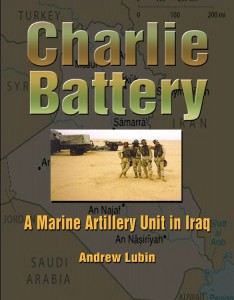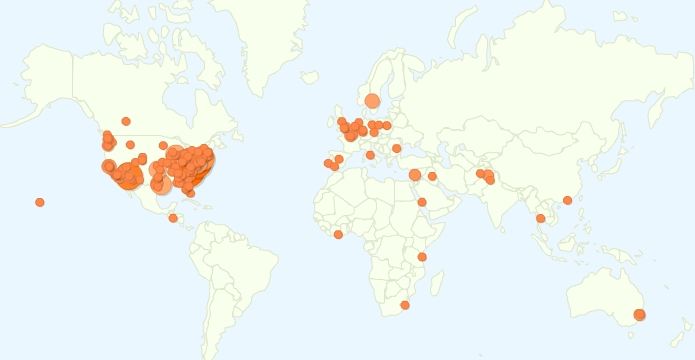Our friend Dave Dilegge at the Small Wars Journal is soon to publish a number of perspectives on the new media. Yours truly contributed a paragraph to this piece, so jump on over there to see if Dave has published this article yet. If not, then jump over there tomorrow too. In fact, make the SWJ a daily stop. Since Dave will include our little paragraph it won’t be rehearsed here. But as a perspective to occupy your attention over the weekend, here is a sober and yet snarky take on Milblogging from the perspective of The Captain’s Journal.
How is it possible to ascertain the difference TCJ makes, if any? Very difficult. TCJ thinks that the affect of the new media is very much a mixed bag, with the professional military still learning to deal with the openness and unstructured nature of it all. TCJ knows with certainty at times that our efforts are not having the intended affect. TCJ called out the Taliban strategy to target logistical lines one year before it began to occur and continued to harp on this issue repeatedly. When nothing of strategic or tactical value comes from such efforts, we have failed, and failed badly.
Yet there are encouraging signs. In our analysis of the battle of Wanat, TCJ extensively covered Observation Post Top Side and its role in the horrible affair. We focused on the terrain and its role in Combat Outposts and counterinsurgency. To our great delight, fellow blogger Slab from OpFor commented on this article. He said “Where I think you hit the nail on the head is when you mention the terrain. The platoon in Wanat sacrificed control of the key terrain in the area in order to locate closer to the population. This was a significant risk, and I don’t see any indication that they attempted to sufficiently mitigate that risk. I can empathize a little bit – I was the first Marine on deck at Camp Blessing back when it was still Firebase Catamount, in late 2003. I took responsibility for the camp’s security from a platoon from the 10th Mountain Div, and established a perimeter defense around it. Looking back, I don’t think I adequately controlled the key terrain around the camp. The platoon that replaced me took some steps to correct that, and I think it played a significant role when they were attacked on March 22nd of 2004. COIN theorists love to say that the population is the key terrain, but I think Wanat shows that ignoring the existing natural terrain in favor of the population is a risky proposition, especially in Afghanistan.”
Later, using analysis tools TCJ noticed this article being studied at great length by a reader at the Counterinsurgency Center at Leavenworth. The Captain went to bed happy that night. Two counterinsurgency practitioners had discussed the issue of terrain in COIN without ever talking directly to each other. They did so because the Captain wrote an article on the subject. Mission accomplished.
Another such example occurred just today, with someone from Army.com network domain from Fort Benning who Googled the phrase “need for Army linguists in COIN,” with TCJ category Language in COIN coming up first on the first page (where The Enemy of My Enemy is linked). Hopefully, someone somewhere will be persuaded to spend a few more dollars on teaching language to young warriors.
TCJ is mostly analysis and advocacy. There is certainly a symbiotic relationship with the main stream media, but we believe that we are as valuable an analysis asset as anyone in the main stream media. On occasion, we scoop exclusive interviews and other information, such as with intelligence sources in Ramadi that scooped us the word on the smuggling lines of Abdul Sattar Abu Risha being targeted and shut down with kinetic operations as a precursor to the “flipping” of the tribes in Anbar. Our sources are as good or better than any in the main stream media.
It has been said that blogging is an exercise in vanity. Perhaps, and perhaps not. Maybe this is true only to a limited extent. TCJ could get 100,000 visits per day (an impossibility good but hyperbole to make a point), but if it could be proven that we had not one iota of affect on policy, strategy, logistics or tactics, then this blog would be shut down tomorrow. Visits are irrelevant if no impact is being made.
Milblogging can be hard work, regardless of what the reader may think. If one is serious about these things and strives to make a difference, then he must study, read, think, stay up late pondering things that effect life and death, and think about the sons of America that have perished along the way, and the pain experienced by their parents or spouses. If you’re trying to pick a hobby, there are much easier and more lighthearted things to do with your time. This can be heavy stuff.
Now for the questions. TCJ wants to know a few things. When the donate button was up on the web site in an attempt to fund embeds for Jim Spiri and The Captain, why didn’t anyone donate a single dollar? If this is an indication of the value of this web site, then why does this site bring visitors back regularly, and why has traffic increased? With the high intelligence level of many of the readers of this web site – and there are some smart ones – why don’t we get more comments? One has to register for the web site, but that’s easy. One has to register for Michael Totten’s web site too, but he gets regular comments. At one time the reader didn’t have to register for comments, but the hate mail, profanity and even threats in the comments created a need to bring more control. Why has this resulted in much fewer comments?
More questions. Why does TCJ have readers it doesn’t even know? Granted, one can register for Feedburner and read the feed without ever visiting the site. But why would a reader not drop a note and let us know they exist, and agree or disagree with our perspective? Speaking of Feedburner, can someone please explain why the numbers fluctuate so wildly? Why will it show 320 readers on Feedburner one morning, and 198 that night? What does that mean? And for that matter, how many Google Reader readers do we have?
Now to the sardonic and snarky. TCJ absolutely, positively and completely refuses to compare ourselves with other blogs. We won’t do it. Period. So readers should not do it. We do what we do, others do what they do. Leave others out of it.
And speaking of comparisons, what about that guy John Robb at Global Guerrillas? Check out his Feedburner readers? 11416 at this writing. Why isn’t TCJ that high? In terms of comparison, we are as good as Robb, aren’t we? Maybe we need to work harder on coming up with slick and pedantic acronyms for everything. Or maybe would should talk more about swarm theory. Then we would have 11416 readers instead of 320 – or 198 – or whatever.
One of the brighter sides of blogging like this is the exchange of e-mail that occurs between bloggers and professional military. Guys like the Godfather of Milblogging, Matthew Currier Burden, knows who I am and is happy to talk with me. TCJ has enjoyed the witty quips back and forth between Andrew Exum who blogs at Abu Muqawama. It has been a pure pleasure to get to know Dave Dilegge at the Small Wars Journal. TCJ absolutely cherishes the long, thoughtful, scholarly and very personal notes back and forth with Col. Gian Gentile, Academy Professor and Military History Division Chief at West Point. TCJ also appreciates all of the trust various professional military have placed in us, giving us first hand accounts, personal perspectives, good analysis and sometimes OPSEC (which of course TCJ doesn’t divulge). This is always good for creating the right perspective, even if the information is too sensitive to share. And TCJ is smart enough to know when something is too sensitive to share. There are also more journalists and bloggers such as Andrew Lubin and Steve Schippert, who we consider very good friends, who have been kind, and who have played an important role in the evolution of TCJ.
Mostly, TCJ is thankful to God for the safe return of our very own warrior from Iraq in 2007, and soon-to-be safe return from the 26th MEU in 2009. This blog existed as an outlet on sleepless nights waiting for that fateful knock at the door by a Marine Chaplain that didn’t happen. If there is a single bit of worth to this blog it will be continued. But this is so very difficult to measure. What metric would one apply, and how would data be gathered to assess that metric?
There are still many questions, and this article hasn’t yielded any answers.






